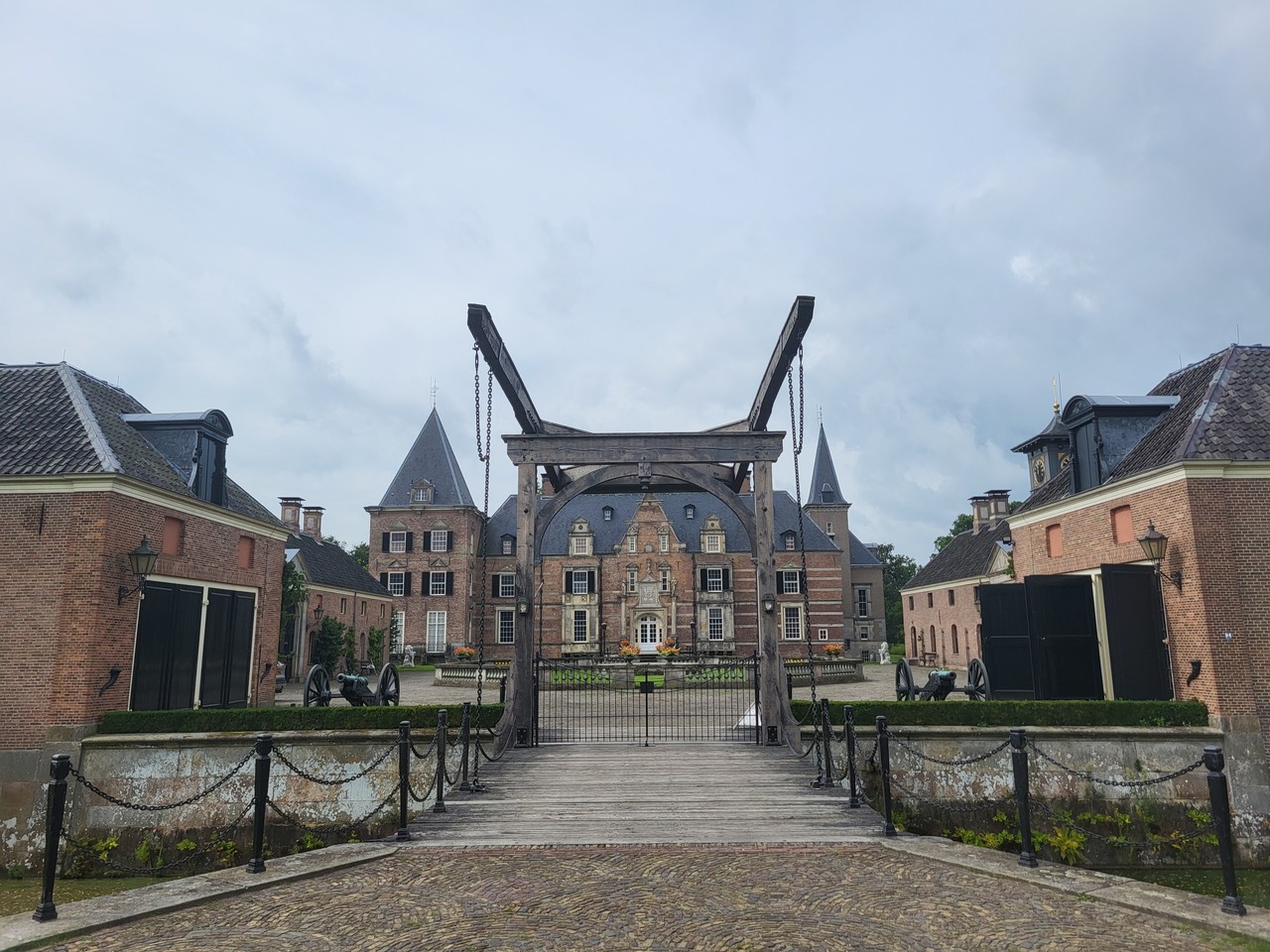When, in September 1944, liberation seemed imminent, the German authorities decided to move much of the national administrative apparatus from The Hague to Delden. Dozens of staff members from the Reichskommissariat Netherlands and their families took up residence in requisitioned hotels, villas, garages, and Twickel Castle. The castle became home to a 22-person staff led by Hauptmann Heinisch, the adjutant of Nazi official Seyss-Inquart.
On the morning of Delden’s liberation—4 April 1945—the Canadian forces stood in the parkland of Twickel Castle. A brief exchange of gunfire followed, during which the castle’s north tower was damaged. Most of the German forces quickly fled, but Captain Heinisch refused to do so. Instead, he killed his wife, their grandson, and himself.
The goods left behind by the German forces became an attractive target for local residents. They looted a ship docked in the harbour, filled with coats, knitwear, boots, and wrist warmers. Among the items abandoned at Twickel Castle was Seyss-Inquart’s silver cigar box, which the Bureau later seized for Property Recovery. The castle’s stables held thousands of guilders’ worth of food, drink, and glassware. Almost everything was loaded onto trucks and sent to the western Netherlands, where the Hunger Winter had hit hard. This greatly disappointed the local commander of the Dutch resistance forces.
A month after liberation, the Reichskommissariat—personified by Seyss-Inquart—briefly returned to Delden. Hitler’s highest representative in the Netherlands had been arrested in Hamburg on 8 May and was transferred to a heavily guarded tent in the Allied army camp at Twickel Castle. There, he had to surrender his ceremonial saber, which he had received from SS leader Himmler. The Canadian forces gave the saber to the Baroness of Twickel. Out of fear of retaliation from the local population, Seyss-Inquart was moved to the Delden water tower. His stay was brief. A year later, the Nazi leader was sentenced to death.
The 1st Canadian Army Corps stayed for several weeks in the army camp on the Twickel estate. Thanks to excellent telephone connections, General Crerar was able to direct Allied operations in Germany from there. A makeshift airstrip was even constructed for reconnaissance planes that monitored German troop movements.
